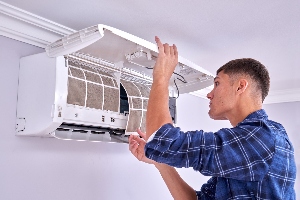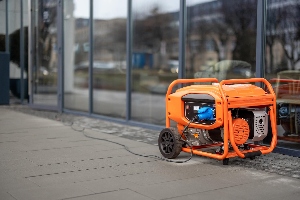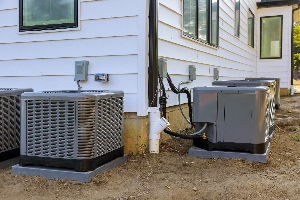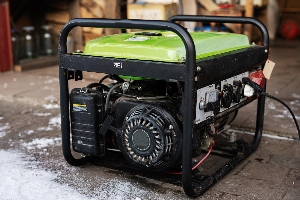Regular air duct cleaning improves indoor air quality by removing accumulated allergens and contaminants that would otherwise circulate throughout your home. When these particles are allowed to build up, they can trigger allergies, respiratory issues, and other health concerns, especially for those with asthma or sensitivities. Additionally, cleaning ducts helps prevent these particles from getting into other components of your HVAC system.
Homes with cleaner duct systems experience more efficient heating and cooling. When ducts are clogged with debris, your system must work harder to push air through, potentially leading to increased energy consumption and unnecessary wear and tear. By maintaining clean air passages, you can help extend the life of your HVAC equipment while potentially reducing your energy bills.
Importance of Air Quality
Clean air in our homes directly impacts our health and comfort. The air we breathe indoors can contain various contaminants that affect our well-being when duct systems aren't properly maintained.
Health Benefits
Clean air ducts contribute significantly to better overall health, reducing the strain on our respiratory system. This leads to an improved immune function and better sleep quality. People often report feeling more energetic after having their air ducts professionally cleaned. This isn't surprising since our bodies can focus resources on normal functions rather than fighting against airborne contaminants.
Clean ducts also mean fewer odors circulating throughout the home. Musty smells, cooking odors, and pet dander can all become trapped in ductwork over time and continuously recirculate.
Reduction of Allergens and Irritants
Air ducts can harbor common allergens like dust mites, pollen, and pet dander. These particles get pulled into the HVAC system and can be distributed throughout the home whenever the system runs. Professional duct cleaning removes these accumulated irritants from the system, which is especially helpful during high-allergy seasons when outdoor allergens are more prevalent.
According to the EPA, dirty air ducts are one source of indoor air particles that can trigger allergic reactions. Symptoms like sneezing, itchy eyes, and congestion may decrease after a thorough cleaning. For homes with pets, regular duct maintenance is even more important as pet hair and dander easily collect in ductwork.
Prevention of Respiratory Conditions
People with asthma or other respiratory conditions can be particularly sensitive to poor indoor air quality, as contaminants in air ducts may trigger asthma attacks or worsen existing breathing problems. Children and elderly individuals typically have more vulnerable respiratory systems. Clean air ducts help create a healthier environment for these sensitive groups.
Dust and mold that accumulate in ductwork can contribute to respiratory infections when constantly recirculated. Regular cleaning helps remove these potential pathogens from your home's air circulation system.
We recommend scheduling duct cleaning every 3-5 years for most homes, but more frequently for households with respiratory concerns or high allergen sensitivity.
System Efficiency and Longevity
Clean air ducts directly impact how well your HVAC system performs and how long it lasts. When ducts are free of dust and debris, your system can operate as designed without unnecessary strain.
Energy Efficiency
Dirty air ducts force your HVAC system to work harder to push air through clogged passages. This increased effort leads to higher energy consumption and bigger utility bills. Clean ducts can reduce energy consumption by up to 21% in some systems.
Dust buildup on vital components like coils and fans creates resistance that requires more power to overcome. Monthly filter changes help, but they don't remove built-up debris inside the ductwork. Professional duct cleaning reaches areas that regular maintenance cannot access.
Consider these energy benefits of clean ducts:
- Reduced system runtime
- Lower monthly utility costs
- More consistent airflow throughout your home
- Improved temperature control
Extended HVAC Lifespan
The average HVAC system should last 15-20 years, but dirty ducts can significantly shorten this timeframe. Dust accumulation forces components to work harder, leading to premature wear and breakdowns.
Key components affected by dirty ducts include:
- Blower motors - They can overheat when working against resistance
- Heat exchangers - They may develop cracks from uneven heating
- Cooling coils - They lose efficiency when coated with dust
Maintenance and Safety
Proper maintenance of air ducts prevents safety hazards and ensures your HVAC system runs efficiently. Regular inspections and cleaning not only improve air quality but also protect your home from potential dangers.
Regular Ductwork Maintenance
Inspect your air ducts at least once a year, looking for visible dust, debris, or signs of moisture that could indicate problems. Professional inspections can identify issues you might miss, such as hidden mold growth or damage inside the ductwork.
Between professional cleanings, keep your system running smoothly by changing air filters every 1-3 months. This simple step prevents excessive dust buildup in your ducts. Also, ensure that air intakes remain unblocked and free from contaminant sources. This improves airflow and reduces the strain on your HVAC system.
Fire Hazard Prevention
Dirty air ducts can become a serious fire hazard. Lint, dust, and debris accumulate over time and create flammable material inside your ductwork. We've seen cases where dirty ducts contributed to fire spreading quickly through homes. Regular cleaning removes these flammable materials and reduces risk.
This buildup can be ignited by:
- Electrical sparks from HVAC components
- Overheated motors
- External fire sources
Pay special attention to dryer vents, which collect highly flammable lint. These should be cleaned annually at minimum to prevent dangerous buildup. Professional inspections can also identify damaged insulation or improperly installed components that might create fire risks.
Professional Duct Cleaning Process
Professional duct cleaning follows a structured approach, and technicians use specialized tools and techniques to remove contaminants that affect air quality and system efficiency.
Assessment and Planning
Before any cleaning begins, professionals conduct a thorough inspection of your duct system, examining access points, duct materials, and the layout of your ventilation network. During this phase, technicians will identify problem areas like visible mold growth, heavy dust accumulation, or pest infestations. They'll document these issues, often with photos or video.
They'll also check for leaks, damaged ducts, or other structural problems that might need repair. This assessment helps determine which cleaning methods will work best for your specific system. The team will then create a cleaning plan that addresses your system's unique needs. They'll discuss their findings with you and explain the process they'll use.
Cleaning and Sanitization Techniques
Professional duct cleaners use various specialized tools designed to dislodge and remove contaminants. High-powered vacuum equipment creates negative pressure in the system, preventing dust from spreading during cleaning. Technicians also use tools like rotating brushes, air whips, and compressed air devices to break up debris within the ducts. These tools are inserted through access points and can reach deep into the ductwork.
For mold or bacteria concerns, sanitizing agents may be applied after cleaning. These EPA-approved products help eliminate microorganisms that could affect air quality. The cleaning extends beyond just the ducts. Professionals also clean other components of your HVAC system, including:
- Air handlers
- Coils
- Drain pans
- Registers and grilles
- Blower motor and assembly
Post-Cleaning Evaluation
After completing the cleaning process, technicians conduct a thorough evaluation to ensure all contaminants have been removed. This often includes a visual inspection using cameras to check the interior of ducts. They'll verify that all access points have been properly resealed. This prevents air leakage that could reduce system efficiency and increase energy costs.
Many companies provide before-and-after documentation showing the improvement in your system. This might include photos or videos of the ducts before and after cleaning. Technicians will also offer recommendations for maintaining clean ducts in the future. This might include regular filter changes, humidity control, or scheduling periodic professional cleanings.
Get in touch to arrange a professional cleaning of your ductwork.













